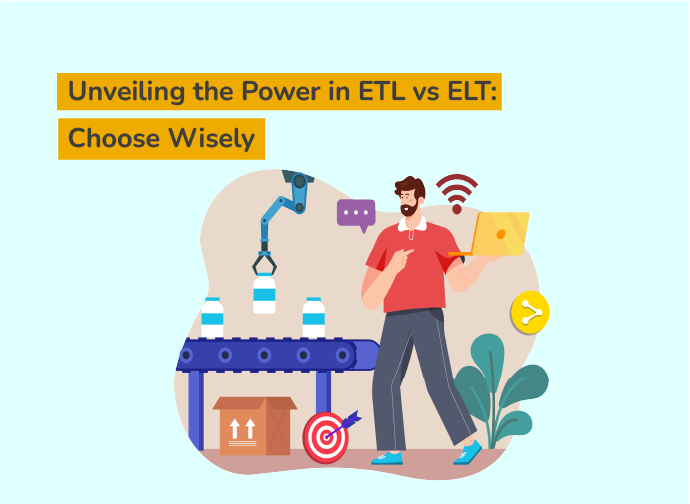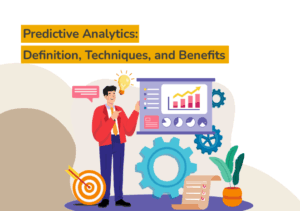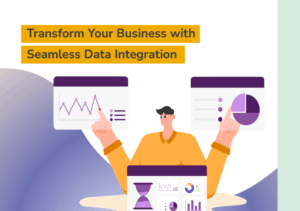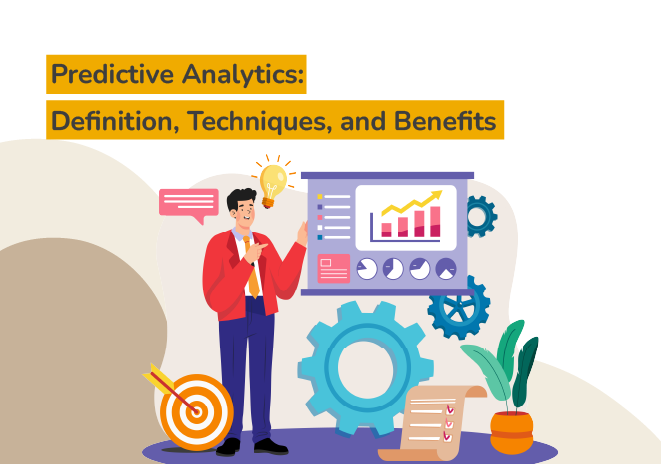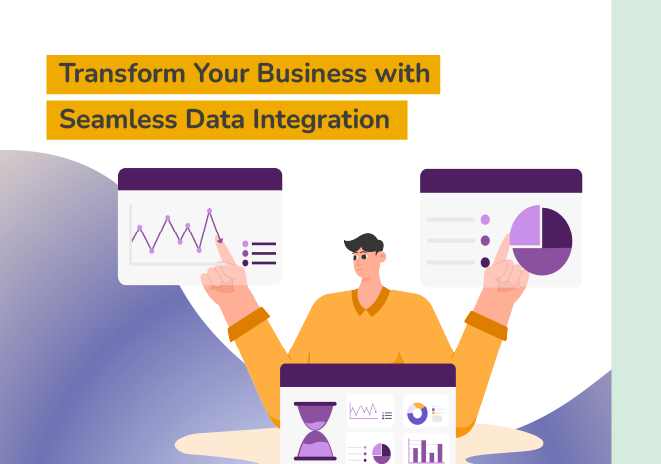What is ETL?
ETL, an acronym for Extract, Transform, Load, is a traditional data processing strategy vital for many businesses. Emerging in the late 20th century, ETL processes revolutionized data integration by extracting data from multiple sources, transforming it for insights, and loading it into data warehouses. The method has evolved to emphasize scalability and efficiency, addressing the growing complexity in data systems. Understanding ETL’s components—extraction, transformation, and load—lays the groundwork for effective data management strategies.
Key Takeaways
- ETL stands for Extract, Transform, Load, a data processing framework crucial for managing large datasets.
- ELT, or Extract, Load, Transform, loads raw data into systems before transformations, offering enhanced scalability and speed.
- ETL is ideal for structured data environments, ensuring data quality and consistency before loading.
- ELT is more suitable for modern cloud-based architectures, providing faster data processing for large and complex datasets.
- Choosing between ETL and ELT depends on data complexity, size, and existing infrastructure compatibility.
- ETL excels in scenarios requiring robust data transformation before loading, while ELT is beneficial for real-time insights and scalability.
- Understanding ETL and ELT is vital for businesses aiming to harness data potential and enhance decision-making.
- The future of ETL and ELT is aligned with automation, scalability, and enhanced data security.
Definition of ETL
Extract, Transform, Load (ETL) is a
data processing framework crucial for organizations aiming to manage large datasets effectively. It involves extracting data from diverse sources, transforming it into a suitable format, and loading it into a destination system. ETL plays a pivotal role in ensuring data accuracy and reliability, making it a foundational component in traditional data management architectures.
Historical context and evolution
The evolution of ETL (Extract, Transform, Load) showcases its transition from rigid, batch-processing systems to more flexible and scalable solutions. Historically, ETL was designed for structured data in data warehouses, but advancements have integrated it with modern data lakes and real-time processing. This progression highlights ETL’s adaptability in the face of increasing data demands and complexity, demonstrating its enduring relevance in data management strategies.
Key components of ETL
ETL, short for Extract, Transform, Load, involves three primary
components essential for managing data workflows. The
extraction phase pulls data from various sources. Next, data undergoes
transformation where it is cleaned, enriched, or restructured to meet target requirements. Finally, during the
load phase, the processed data is loaded into a data warehouse or system, enabling streamlined access for further analysis.
What is ELT?
ELT, standing for Extract, Load, and Transform, is a modern data processing method distinct from ETL. This approach revolves around
loading raw data into a data warehouse before transforming it. ELT takes advantage of cloud-based architectures and is ideal for handling
large and
complex datasets. By deferring the transformation phase, ELT can offer improved scalability and speed, streamlining the data workflow.
Definition of ELT
Extract, Load, Transform (ELT) reshapes traditional
data integration by reversing the sequence prevalent in ETL processes. By loading
raw data into data warehouses before transformation, ELT leverages modern cloud-based technologies for enhanced processing power and scalability. This method allows organizations to handle
big data with greater flexibility, ultimately facilitating faster data insights while minimizing latency.
How ELT differs from ETL
ETL and ELT are pivotal in the world of data integration, yet they differ in their approach and application.
ETL (Extract, Transform, Load) traditionally extracts data, transforms it for specific needs, and then loads it into the target system. Conversely,
ELT (Extract, Load, Transform) extracts and loads data into a cloud-based platform where transformation is performed, offering enhanced scalability and speed.
Key components of ELT
The
key components of ELT (
Extract, Load, and Transform) revolve around utilizing the
power of modern data warehousing technologies. Unlike traditional data processing, ELT efficiently loads large volumes of raw data first, then leverages high-performance databases to transform it. This approach capitalizes on
scalability,
cost-efficiency, and
speed, enabling real-time analytics and enhancing data-driven insights.
What are the Advantages and Disadvantages of ETL?
Extract, Transform, Load (
ETL) is a powerful data integration process well-regarded for its
structured approach. Among its advantages, ETL offers
robust data cleaning capabilities and ensures
data consistency. However, it might face challenges with
large data volumes and requires substantial
hardware resources. Ideal use cases include scenarios demanding
highly transformed data for business analytics and reporting, where precision and cleanliness are paramount.
Pros of using ETL
ETL, or Extract, Transform, Load, is a powerful and efficient data processing tool. One of its main advantages is its ability to transform data before loading it into the target system, ensuring data quality and consistency. ETL processes are highly reliable for handling complex transformations and are well-suited for structured data environments, facilitating robust data integration.
Cons of using ETL
Despite its widespread use, ETL systems come with certain
limitations that businesses must consider. One major drawback is the
time-consuming nature of the ETL process, as data transformations occur before loading, resulting in longer processing times. Additionally, ETL often requires significant
resources for maintaining complex workflows, making it less adaptable to rapid changes in data structures. This poses a challenge for businesses with
dynamic data needs.
- Lengthy processing times due to pre-transformation
- High resource requirements for maintenance
- Lower adaptability to frequent data changes
Use cases where ETL excels
ETL stands out in scenarios requiring robust data
transformation processes before loading, ensuring that data quality and integrity are maintained. It’s ideal for traditional
data warehouses where performance is prioritized over speed. The structured approach of ETL is beneficial for organizations needing detailed
validation and
cleansing before storage, such as in
financial systems handling complex transactions.
What are the Advantages and Disadvantages of ELT?
ELT (Extract, Load, Transform) offers distinct
advantages in modern data processing. By loading data into a target system before transformation, ELT harnesses the power of database engines to handle large data volumes efficiently. This process is immensely scalable and reduces latency. However, it also comes with
challenges. The dependency on powerful database infrastructures can increase costs and complexity. ELT is best suited for environments where real-time data processing and scalability are paramount.
Pros of using ELT
The
Extract, Load, Transform (ELT) process presents various advantages in modern data processing environments. ELT facilitates
faster data processing by leveraging high-performance databases, thus enabling real-time analytics. Moreover, with ELT, data is first loaded into the storage system, which allows for flexible analysis. This approach also reduces ETL latency, encouraging
higher efficiency in handling large volumes of data.
Cons of using ELT
While ELT offers flexibility by harnessing the power of modern data storage and processing, it presents some challenges. One major drawback is the increased complexity in managing transformations within the data warehouse. This can lead to higher computational costs and longer processing times due to large data volumes. Additionally, ELT often requires advanced skills and expertise to manage these intricate transformations efficiently.
Use cases where ELT is beneficial
ELT frameworks are particularly advantageous in modern data ecosystems where scalability and speed are critical. With rising data volumes and the need for real-time insights, ELT allows businesses to leverage cloud-native platforms efficiently. It is beneficial for companies dealing with big data as it minimizes processing time by transforming data in its storage location. Thus, organizations can focus on analyzing data without delays associated with data movement.
How to Choose Between ETL and ELT?
Choosing between ETL (Extract, Transform, Load) and ELT (Extract, Load, Transform) is central to data pipeline success.
Factors such as data complexity, size, and existing infrastructure can influence the decision. ETL is often ideal for smaller datasets and historical data transformations, while ELT suits larger datasets leveraging cloud capabilities.
Factors to consider when choosing
When deciding between
ETL and
ELT, several critical factors must be considered to meet organizational needs effectively. Consider the data complexity and volume, as processing needs can significantly differ. Evaluate existing infrastructure to determine compatibility and integration. Understanding these elements helps determine which approach prioritizes optimal performance and cost-efficiency, ensuring a tailored fit for your business’s data strategy.
Data complexity and size implications
When deciding between
ETL and
ELT, the complexity and size of data are critical factors. ETL is ideal for structured, medium-sized datasets, offering efficient transformation processes before loading. In contrast, ELT excels with large, unstructured datasets, utilizing powerful database capabilities for post-load transformations. Choose ETL for simplicity or ELT for handling vast and complex data efficiently.
| Factor |
ETL |
ELT |
| Data Size |
Medium |
Large/unstructured |
| Processing |
Pre-load (transforms first) |
Post-load (transforms after loading) |
| Complexity |
Simple |
Complex |
Infrastructure and existing systems compatibility
When deciding between ETL and ELT, one critical factor is how well each approach aligns with your existing infrastructure and systems. ETL integrates seamlessly with traditional data warehouses, utilizing resources efficiently. Conversely, ELT shines in modern cloud-based environments, leveraging their scalable resources effectively. Analyzing your current systems’ compatibility can guide you towards the right choice, ensuring optimal performance and resource utilization.
„Compatibility with existing infrastructure and systems is a key consideration in choosing between ETL and ELT, as it affects integration and performance.“
What are the Best Practices for Implementing ETL and ELT?
Implementing
ETL and
ELT efficiently requires adherence to certain best practices. Begin by comprehensively understanding your data architecture to align the right processes. Utilize robust tools and technologies tailored to your specific needs. Keep abreast of the latest
data integration trends to continuously improve. Ensuring data quality and security is paramount, alongside leveraging
automation to streamline operations. Effectively managing ETL and ELT support can significantly bolster your data-driven strategies.
„Optimizing ETL and ELT starts with understanding data architecture. Robust tools and technologies are crucial for tailored solutions. Key practices include ensuring data quality and leveraging automation.“
Strategies for effective implementation
Implementing
ETL and
ELT strategies requires a clear understanding of their
unique capabilities. Success hinges on proper
planning, where consideration of
data processing needs,
team expertise, and
technological setup are crucial. Moreover, aligning your
business goals with the right strategy fosters benefits like
improved efficiency and
data accuracy. Embracing iterative improvements can significantly enhance your implementation process, leading to more
robust data management systems.
Tips for avoiding common pitfalls
When implementing ETL or ELT processes, understanding common pitfalls is essential. Often, businesses struggle with issues like inadequate
data validation, inefficient
workflow management, and neglecting proper
monitoring systems. To avoid these obstacles, ensure clear documentation, invest in
automation tools, and consistently test the integration points. Planning and communication among teams can further mitigate risks, ensuring a smoother, more effective ETL or ELT implementation.
Tools and technologies for ETL and ELT
Selecting the right tools and technologies for ETL and ELT is crucial for optimizing data processes. Leading solutions like Informatica, Talend, and Apache Nifi for ETL, along with Snowflake, Google BigQuery, and Apache Spark for ELT, provide diverse options tailored to specific needs. Consider integration capabilities, transformation speed, and scalability to ensure seamless data management and efficient performance.
Why is Understanding ETL and ELT Important for Businesses?
Understanding ETL and ELT is crucial for businesses aiming to harness their data’s potential. Both processes
streamline data management, making
informed decisions easier. ETL provides structured data, ideal for complex analysis, while ELT offers flexibility, suiting vast data sets. Grasping these concepts supports efficient strategy formulation, crucial for competitive edges. Adapting future trends in ETL and ELT can propel businesses strategically forward, ensuring they remain
data-driven and innovative.
Impact on business decision making
Understanding the differences between
ETL and
ELT is crucial for enhancing business decision-making processes. By effectively selecting and implementing the right data processing mechanism, companies can gain valuable insights, streamline operations, and foster innovation. Ensuring the right fit based on your organization’s needs will significantly impact both strategic and tactical decisions, leading to enhanced competitiveness and efficiency.
- Data integration
- Insight enhancement
- Operational efficiency
- Strategic advantage
Role in data management strategies
The distinction between ETL and ELT plays a fundamental role in shaping
data management strategies. Companies must evaluate their data processing needs, available resources, and existing
infrastructure to leverage the right approach. By understanding their specific requirements, businesses can create more efficient, scalable, and responsive data ecosystems, ultimately enhancing their ability to derive insights and make informed decisions. The choice between ETL and ELT can significantly influence data accessibility and analytical capabilities.
Future trends and developments in ETL and ELT
As the landscape of data processing continues to shift, it’s essential to stay abreast of the latest
trends in ETL and ELT. Emerging technologies are driving advancements, making these tools more efficient and capable of handling
complex data ecosystems. From cloud integration to real-time data processing, the future of ETL and ELT is aligned with automation,
scalability, and enhanced
data security.
FAQ
What is ETL?
ETL, an acronym for Extract, Transform, Load, is a data processing framework crucial for organizations aiming to manage large datasets effectively.
How has ETL evolved over time?
ETL has evolved from rigid, batch-processing systems to more flexible and scalable solutions that now integrate with modern data lakes and real-time processing.
What is the key difference between ETL and ELT?
The key difference is in the order of operations: ETL transforms data before loading it, while ELT loads raw data before performing transformations, leveraging cloud-based environments for enhanced scalability.
What are the advantages of using ETL?
ETL offers robust data cleaning capabilities and ensures data consistency, making it ideal for complex transformations and structured data environments.
What are the cons of using ETL?
Cons include time-consuming processes due to pre-transformation, high resource requirements for maintenance, and lower adaptability to frequent data changes.
What are some advantages of using ELT?
ELT facilitates faster data processing by leveraging high-performance databases, enabling real-time analytics and offering scalability for large datasets.
What are some challenges of using ELT?
Challenges include managing transformations within the data warehouse leading to higher computational costs and requiring advanced expertise.
How should a business choose between ETL and ELT?
Factors such as data complexity, size, and existing infrastructure should be considered; ETL suits smaller, structured datasets, while ELT is better for large, unstructured datasets leveraging cloud capabilities.

